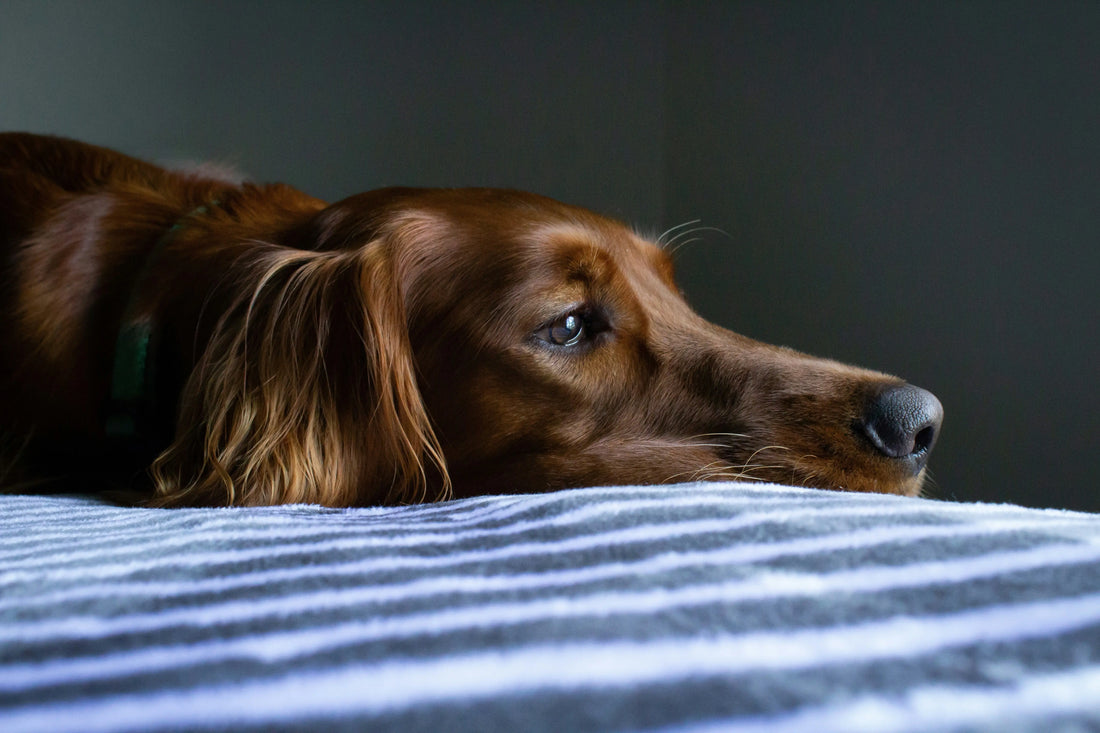
What does my dog dream of?
Share
Do Dogs Dream? The Science Behind Their Sleeping Adventures
Scientists think they are probably dreaming of us.
It’s a wonderful sight, watching Rufus or Louie sound asleep after a long walk, snoring gently and paws paddling madly. We always say they are sleep-chasing squirrels. But what’s actually going on in there? Are they chasing squirrels, running in fields or reliving their favourite moments of the day? As it turns out, dogs do dream, and according to experts, they might even be dreaming of us.
Do dogs dream like humans?
The short answer is yes, dogs do dream, and they experience dreams in a way that is surprisingly similar to humans. Research into canine sleep patterns has found that dogs go through sleep cycles like we do, including a phase called Rapid Eye Movement (REM) sleep. This is the same stage of sleep where humans experience vivid dreams. During REM sleep, the brain is highly active, and for dogs, this is when the twitching, paw movements and soft barking are most likely to happen.
Just like us, dogs experience muscle paralysis during REM sleep to prevent them from physically acting out their dreams. But sometimes, small muscle twitches break through, which is why you might see your dog’s paws moving or their nose twitching as they sniffing something in their dream.
How do we know dogs dream?
Researchers have studied the brain activity of dogs during sleep, and what they found is remarkable. Brain scans show that dogs’ brainwave patterns during REM sleep are strikingly similar to those of humans. This suggests that dogs experience similar mental processes while dreaming.
In one experiment, scientists monitored the brain activity of sleeping rats and discovered that the neurons in the rats’ brains fired in patterns that corresponded to activities they had done earlier that day, like running through mazes. Since dogs have a more complex brain than rats, it’s reasonable to believe that they also replay events from their waking lives in their dreams.
What do dogs dream about?
Since we can’t actually ask Rufus and Louie to tell us about their dreams, researchers have made some educated guesses. According to Harvard psychologist Dr. Deirdre Barrett, it’s likely that dogs dream about the same things that occupy their minds during the day. Since dogs spend much of their time thinking about their owners, playing, and exploring the world, it’s reasonable to assume that these activities form the basis of their dreams.
Dr. Barrett suggests that, just as people dream about their loved ones, dogs may dream about their owners. So, when your dog is twitching away in their sleep, they might be dreaming of playing fetch with you, running to greet you at the door, or reliving favourite moments spent together. Doesn’t that make watching them dream feel even more heartwarming?
Do all dogs dream the same way?
The content and intensity of a dog’s dreams may depend on factors like breed, size, age, and personality. Puppies, for example, spend more time in REM sleep than adult dogs, which means they may dream more often. This might be because puppies are learning so much about the world during the day, and their brains are busy processing all that new information at night.
Similarly, larger dogs tend to have longer but less frequent dreams, while smaller dogs have shorter, more frequent dreams. So, if your Chihuahua seems to be twitching more often than your friend’s Golden Retriever, that’s perfectly normal.
Dogs with higher levels of daily activity might also have more vivid dreams. If your dog has spent the day chasing a ball at the park, they may replay those moments in their sleep. This could explain why you see paw paddling, muffled barks, or even tail wags while they dream.
Should you wake your dog from a dream?
If your dog appears to be having a particularly lively dream it might be tempting to wake them. However, unless it seems like they’re in distress, it’s best to let them dream. Just like with humans, waking a dog during REM sleep can be disorienting and leave them feeling groggy. If your dog seems uncomfortable or appears to be having a nightmare (marked by more frantic movement or distress sounds), a gentle call of their name might help them wake calmly.
The next time you see your dog twitching, wagging their tail, or softly barking in their sleep, remember that they’re probably reliving the joy of chasing a ball, exploring the park, or sharing a cuddle with you.
Because understanding your dog is just the start, give them the nutrition they need to live healthier, happier lives for longer. Discover our supplements.
